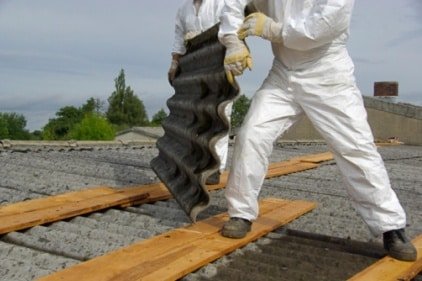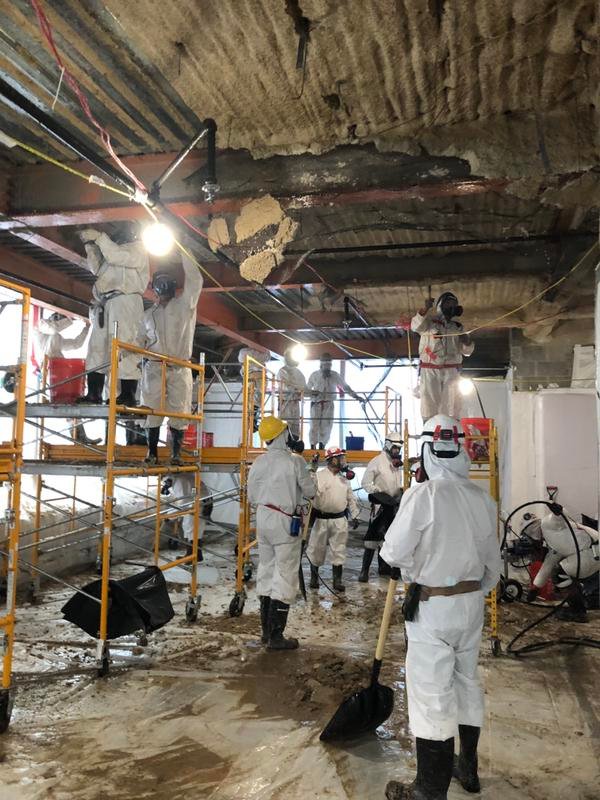We are the industry leader
Asbestos Removal Sydney Wide
We are a professional team of licensed demolition contractors, that specialise in asbestos removal Sydney wide as far as Campbelltown NSW. We provide abatement and testing for both residential homes and commercial site clean up.
- Asbestos Testing
- Insurance Claims
- Asbestos Removal
- Asbestos Inspection
GET IN TOUCH
Schedule an Inspection
OUR SERVICES
Asbestos Removal & Disposal
We do the job in a safe and efficient manner so leaving your site spotless.

Hazardous Asbestos Removal & Disposal
- Residential Demolition
- Commercial Demolition
- House Demolition
- Stripouts
- Rubbish removal
Unlike other asbestos removal companies, we operate 7 days a week and will have a fully licensed and insured contractor visit your site in Sydney for an obligation free quote.
What is Asbestos?
It is a fibrous silicate mineral that was widely used in building materials in the Mid 1980’s. Over one third of homes in Australia have asbestos containing material (ACMs). The use of ACM’s were popular because of their resistance to heat, water and erosion.
It’s use was banned in Australia on 31st December 2003, but any house built or renovated before 1990 will likely contain some asbestos.
It is commonly referred to by its colour with white and blue being the most common in Australia. The band Midnight Oil even wrote the song “Blue Sky Mine” about the plight of the workers at the Wittenoom mines who suffered asbestos related diseases after breathing in the toxic dust from the mine.
Serpentine group – white asbestos (chrysotile).
Amphibole Group – blue asbestos (crocidolite), brown asbestos (amosite), grey asbestos (anthophyllite).
Asbestos is a serious health risk when the fibres become airborne and can be breathed in leading to asbestosis, lung cancer and mesothelioma for which there is no cure.
Building materials containing asbestos are described as either Friable or Non-Friable (Bonded).
Asbestos Removal Sydney
Non Friable or Bonded Asbestos
Non Friable means the hazardous material is bonded into the building product and cannot be crumbled or pulverised into powder by using the pressure of you hands when dry. Although relatively safe if left undisturbed, bonded asbestos is still dangerous if handled improperly.

Warning! Whatever you do don’t:
- Cut
- Sand
- Drill
- Break
- Scrape
- Demolish
- Dump
- Water blast
This will release dust particles into the air causing the bonded asbestos to become Friable.
Common examples of non friable asbestos include:
- Fibro Sheeting (flat and corrugated)
- Asbestos Cement
- AC Sheeting
- Water and Drainage
- Roof shingles
- Floor tiles
- Vinyl flooring
- Electricity and gas meter boxes
Brand Names that included ACMs
- Fibrolite (1972–1982)
- Durock (up to 1974)
- Coverline or Highline profiled sheets (1972–1982)
- Hardiflex or Hardiplank (1982)
- new Hardiflex (1982–present)
- Glamortex
- Whispa
Friable Asbestos
Is asbestos in the form of a powder or can be reduced to powder easily by crushing it with your hand. This was mostly used in commercial premises as pipe lagging or sprayed limpet.
Although not commonly used in residential homes, there was a company trading as Mr Fluffy that used loose-filled asbestos as ceiling insulation, which affected a small number of homes in South East NSW. If you believe you have loose-fill asbestos call Service NSW on 13 77 88 or visit http://www.nsw.gov.au/loosefillasbestos. The NSW Heads of Asbestos Coordination Authorities (HACA) are working with local councils and residents with impacted homes.
What asbestos does it look like?
Most people can’t tell if something contains asbestos just by looking at it. The only way to truly tell if a building material is an ACM is to send it for testing at NATA accredited asbestos testing lab. You can find where these labs are on the National Association of Testing Authorities website: www.nata.com.au
Here are some examples of products containing asbestos.
Who can remove asbestos?
It is always advisable to get a licensed professional to safely remove asbestos.
If you want to remove more than 10m2 of bonded asbestos, then you must get a licensed asbestos contractor by law with at least a Class B license.
You need a contractor with a Class A asbestos license to remove friable asbestos.
Watch the WorkCover video below to see why it is a very bad idea to try and remove it yourself. The City of Sydney has information regarding the health and safety risks of DIY removal.
Asbestos Testing Service
Inspection & Testing for Asbestos
The only real way to know if your building does not contain any asbestos-containing materials is to have it tested by professionals. Samples are tested using a stereo microscope and PLM, or polarising Light Microscope, to determine if asbestos crystal fibres are present.
GET IN TOUCH

